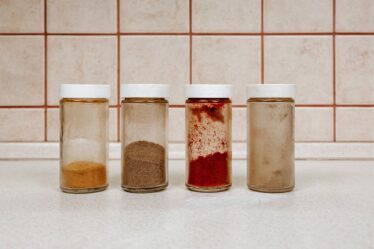
Cinnamon is a spice that has been used for centuries in various cuisines around the world. Known for its warm and sweet flavor, cinnamon is a popular ingredient in both sweet and savory dishes. But cinnamon is more than just a delicious flavor enhancer; it also offers a range of health benefits and has a rich history that spans ancient civilizations. In this blog post, we will explore the origins of cinnamon, its health benefits, its use in cooking and beverages, its beauty benefits, its role in traditional medicine, its historical significance, its cultural significance in different countries, and its role in contemporary cuisine and culture.
Key Takeaways
- Cinnamon has ancient roots and has been used for centuries in traditional medicine and cooking.
- Cinnamon has numerous health benefits, including anti-inflammatory and antioxidant properties.
- Cinnamon can be used in both sweet and savory dishes, adding a unique flavor to any recipe.
- There are different types of cinnamon, with Ceylon cinnamon being the most highly prized.
- Cinnamon can be added to beverages for a flavorful twist, and can also be used in beauty products for its skin and hair benefits.
The Origins of Cinnamon: A Spice with Ancient Roots
Cinnamon has a long and storied history that dates back thousands of years. It was first used in ancient civilizations such as Egypt, China, and India. In these cultures, cinnamon was highly prized for its medicinal properties and was often used in religious rituals. The spice was so valuable that it was considered a luxury good and was traded along ancient trade routes.
The Health Benefits of Cinnamon: More Than Just a Delicious Flavor
In addition to its delicious flavor, cinnamon also offers a range of health benefits. It is rich in antioxidants, which help protect the body against damage from free radicals. Cinnamon also has anti-inflammatory properties, which can help reduce inflammation in the body. Additionally, cinnamon has been shown to help regulate blood sugar levels and improve heart health.
Cinnamon in Cooking: From Sweet Treats to Savory Dishes
| Recipe | Amount of Cinnamon Used | Preparation Time | Cooking Time | Serving Size |
|---|---|---|---|---|
| Cinnamon Rolls | 2 teaspoons | 30 minutes | 25 minutes | 12 rolls |
| Cinnamon Apple Pie | 1 tablespoon | 20 minutes | 50 minutes | 8 slices |
| Cinnamon French Toast | 1 teaspoon | 10 minutes | 10 minutes | 4 slices |
| Cinnamon Roasted Sweet Potatoes | 1/2 teaspoon | 10 minutes | 30 minutes | 4 servings |
| Cinnamon Spiced Chili | 1 tablespoon | 15 minutes | 1 hour | 6 servings |
Cinnamon is a versatile spice that can be used in a wide variety of dishes. In sweet treats, such as cinnamon rolls and apple pie, cinnamon adds warmth and depth of flavor. In savory dishes, such as Moroccan tagines and Indian curries, cinnamon adds complexity and richness. Whether you’re baking a batch of cookies or simmering a pot of stew, cinnamon can take your dishes to the next level.
The Different Types of Cinnamon: Which One Should You Use?
There are several different types of cinnamon available, but the two most common are Ceylon cinnamon and Cassia cinnamon. Ceylon cinnamon, also known as “true” cinnamon, has a delicate and slightly sweet flavor. It is often used in baking and desserts. Cassia cinnamon, on the other hand, has a stronger and more intense flavor. It is often used in savory dishes and can withstand high heat. When choosing cinnamon for your recipe, consider the flavor profile you’re looking for and choose accordingly.
Cinnamon in Beverages: Adding Flavor to Your Drinks

Cinnamon is not only a great addition to food, but it can also add depth and complexity to beverages. In coffee, cinnamon can add a warm and spicy note. In tea, cinnamon can add a sweet and aromatic flavor. Whether you’re enjoying a cup of hot cocoa or a refreshing iced tea, adding a sprinkle of cinnamon can elevate your drink to new heights.
Cinnamon in Beauty: The Spice’s Benefits for Your Skin and Hair
In addition to its culinary uses, cinnamon also offers a range of beauty benefits. It can help improve skin texture, reduce acne and blemishes, and promote hair growth. You can incorporate cinnamon into your beauty routine by making DIY face masks, scrubs, and hair treatments. Just be sure to do a patch test first to make sure you’re not allergic to cinnamon.
Cinnamon in Traditional Medicine: A Natural Remedy for Various Ailments
Cinnamon has been used in traditional medicine for centuries to treat various ailments. It has been used as a natural remedy for colds, digestive issues, and menstrual cramps. To incorporate cinnamon into your wellness routine, you can add it to herbal teas, sprinkle it on oatmeal or yogurt, or take it in supplement form.
Cinnamon in History: From a Luxury Good to a Common Household Spice
Cinnamon was once considered a luxury good and was traded along ancient trade routes. It was highly prized for its medicinal properties and was often used in religious rituals. However, as trade routes expanded and cinnamon became more widely available, it became a common household spice. Today, cinnamon is a staple in many kitchens around the world.
Cinnamon and Culture: The Spice’s Significance in Different Countries
Cinnamon is used in various cuisines and cultures around the world. In India, it is used in curries and chai tea. In Mexico, it is used in mole sauce and hot chocolate. In the Middle East, it is used in baklava and spiced rice dishes. The uses of cinnamon vary from country to country, but its significance remains the same – it adds flavor and depth to dishes and is an integral part of cultural traditions and celebrations.
Cinnamon in Modern Times: The Spice’s Role in Contemporary Cuisine and Culture
In modern times, cinnamon continues to be a popular and versatile spice. It is used in fusion dishes that combine different culinary traditions, such as cinnamon-spiced tacos or cinnamon-infused cocktails. It is also used in innovative flavor combinations, such as cinnamon and chili or cinnamon and citrus. Cinnamon has become a staple in contemporary cuisine and culture, offering endless possibilities for creative cooks and food enthusiasts.
In conclusion, cinnamon is more than just a delicious flavor enhancer – it offers a range of health benefits, has a rich history that spans ancient civilizations, and plays a significant role in various cuisines and cultures around the world. Whether you’re using it in cooking, beverages, beauty treatments, or traditional medicine, cinnamon adds warmth, depth, and complexity to any dish or drink. So the next time you reach for that jar of cinnamon, remember the centuries of history and tradition that have made this spice a beloved and versatile ingredient.
If you’re a fan of cinnamon flavoring, you’ll definitely want to check out this informative article on Flavorful Sips. It’s a comprehensive guide to spices and the hidden flavors they bring to your dishes. From cinnamon’s warm and comforting notes to other exciting spices, this article will take you on a culinary adventure. Discover new ways to incorporate cinnamon into your recipes and explore the world of flavors waiting to be explored. Don’t miss out on this flavorful journey! Read more here.



